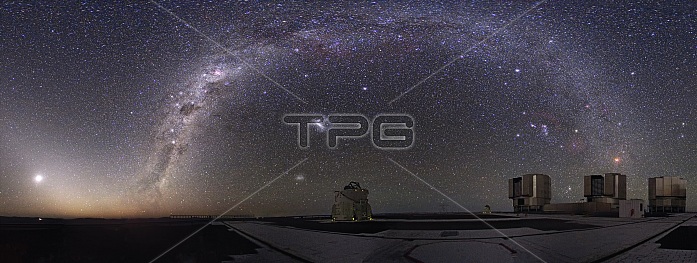
At Cerro Paranal in the Chilean Atacama Desert, one of the most remote places in the world, the distance from sources of light pollution makes the night sky all the more remarkable during a total lunar eclipse. This panoramic image shows the view of the starry sky from the site of ESO's Very Large Telescope (VLT) at Cerro Paranal during the total lunar eclipse of December 21, 2010. The reddish disk of the Moon is seen on the right of the image, while the Milky Way arches above. Another faint glow of light is also visible, surrounding the brilliant planet Venus in the bottom left corner of the picture. This phenomenon, known as zodiacal light, is produced by sunlight reflecting off dust in the plane of the planets. It is so faint that it's normally obscured by moonlight or light pollution. During a total lunar eclipse, the Earth's shadow blocks direct sunlight from the Moon. The Moon is still visible, red in color because only light rays at the red end of the spectrum are able to reach the Moon after being redirected through the Earth's atmosphere.
| px | px | dpi | = | cm | x | cm | = | MB |
Details
Creative#:
TOP22315621
Source:
達志影像
Authorization Type:
RM
Release Information:
須由TPG 完整授權
Model Release:
N/A
Property Release:
No
Right to Privacy:
No
Same folder images:

 Loading
Loading